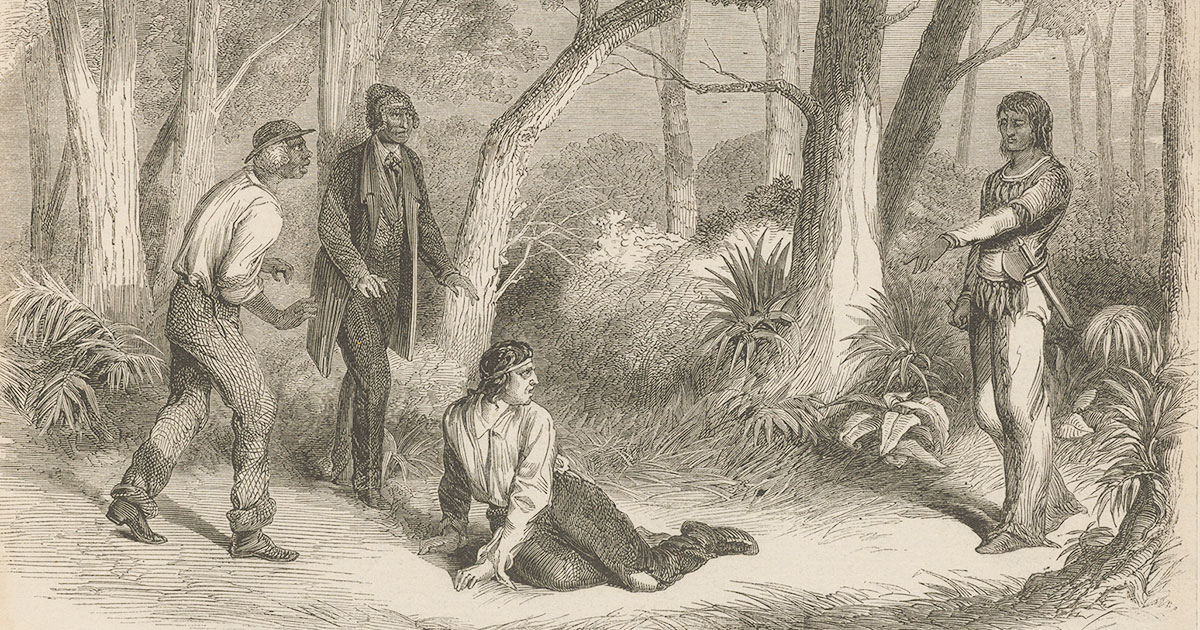Book shows how abolitionists used pop culture

LAWRENCE – While growing up in the Southeast, Laura Mielke visited the Harpers Ferry historic site with her parents. But it wasn’t until she became a professor of English at the University of Kansas that she began to think more deeply about the abolitionist raider John Brown’s backstory here.
The mixed motivations, personal and political, that Brown may have had for the raid on the federal arsenal in what is now West Virginia are broached in one of the plays Mielke writes about in her new book, “Provocative Eloquence: Theater, Violence, and Antislavery Speech in the Antebellum United States” (University of Michigan Press, 2019).
The book explores how the abolitionist cause played out on American theatrical stages and how these stagings, in turn, influenced the real world.
Among her research efforts, Mielke said she pored over the collection of documents relating to Kate Edwards Swayze, author of the 1859 play “Ossawatomie Brown,” at the Kansas State Historical Society in Topeka. Swayze’s play lays out some of Brown’s tribulations in “Bleeding Kansas” before he headed east to make his raid.
“It's a play that, from what we can tell, involves no people of color, which seems like a literal whitewashing of John Brown and his actions,” Mielke said. “It's a play that focuses the tragedy on the impact it had on the women in his life: his wife and daughters. And yet at the same time, it gives moments for the Brown character to very eloquently speak against slavery.
“I argue that it's one of those plays that shows the competing reactions to John Brown. For those who were inspired and thrilled by his actions, they got the anti-slavery speech. For those who believed he was a madman, they had scenes that supported that. And for those who just wanted to go to the theater for a good cry, they got emotional, domestic scenes between mother and daughter.”
Mielke says contemporary readers ought to remember that theatre was, relatively speaking, a far more important cultural force in the 19th century than it is today. This is why she believes we need a fuller understanding of its political engagement.
“Especially in urban centers in the U.S.,” Mielke said, “theatre was very important. It was a popular cultural juggernaut. For instance, ‘Uncle Tom's Cabin’ was wildly popular when it appeared in 1852, but we know that more people saw stagings of it than read the novel. We are inclined today to think about TV, movies, streaming as focusing us, as drawing our attention. But the theatre was a gathering place and a major source of entertainment for Americans.”
In addition, Mielke said, “When we think of the theatre today, we have a sense of theatre as being a form of high culture. But that kind of differentiation didn't happen until the second half of the 19th century. Before that, and in the period I write about, it was a more democratic sight. There was a broader range of society who went to watch and applaud the performances.”
Mielke says the book is not meant only to show how “abolitionists staged their argument in the theatre,” although there is some of that.
“What's happening in the theatre is informing abolitionist speeches, abolitionist fiction, abolitionist arguments on the floor of the Senate,” the KU researcher said. “So it was important to some who were opposed to slavery to write anti-slavery plays, either to read them aloud or have them staged. What I'm interested in is not just that, but also the way in which Shakespeare was being used by anti-slavery activists, or the figure of the heroic orator, who is so important in popular plays of the day; how that informs the arguments they're making against slavery.”
Mielke said she hopes her book makes a contribution in this regard.
“Literary and political historians don't often think about the theatre in this period,” she said. “They're missing the way in which theatricality informs anti-slavery and, for that matter, pro-slavery arguments.”
Mielke said she likes to challenge conventional wisdom in her work.
“That is something that's always motivated me in my research and that I hope I've made clear in this book, is it's way too simple to say a book or a play or a speech has one particular political meaning, especially when it's performed,” she said. “You have such a broad range of audience reaction and interpretation that it had multiple political valences. … there were a variety of pro-slavery and anti-slavery stances.”
Illustration: “The Red Cedar Swamp” scene from “The Octoroon,” as performed in 1861 at the Adelphi Theatre in London, taken from a book on the play’s author and now included in Laura Mielke’s book. Credit: TS 931.2 v. 5, Houghton Library, Harvard University.